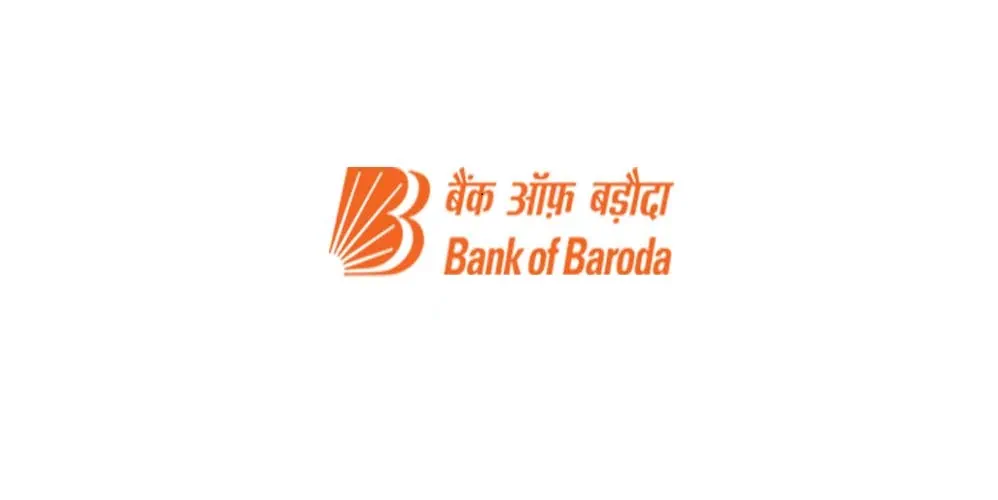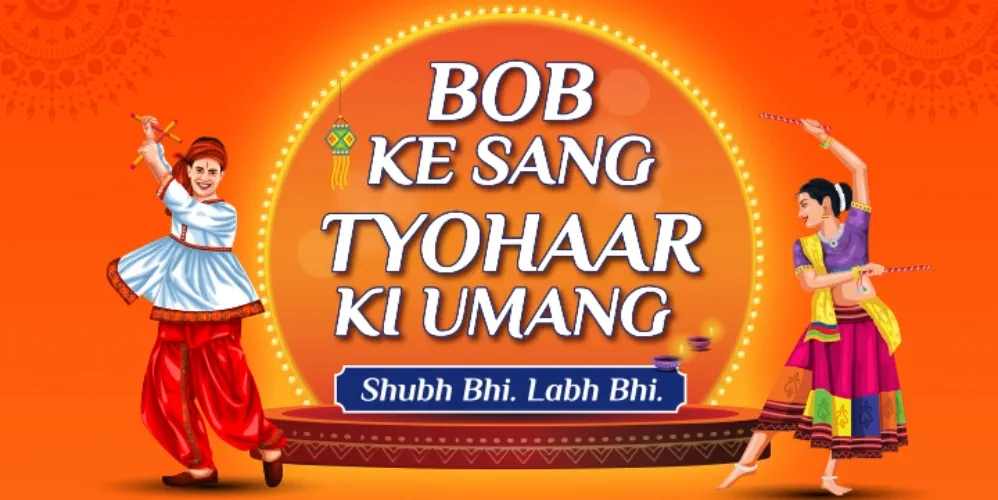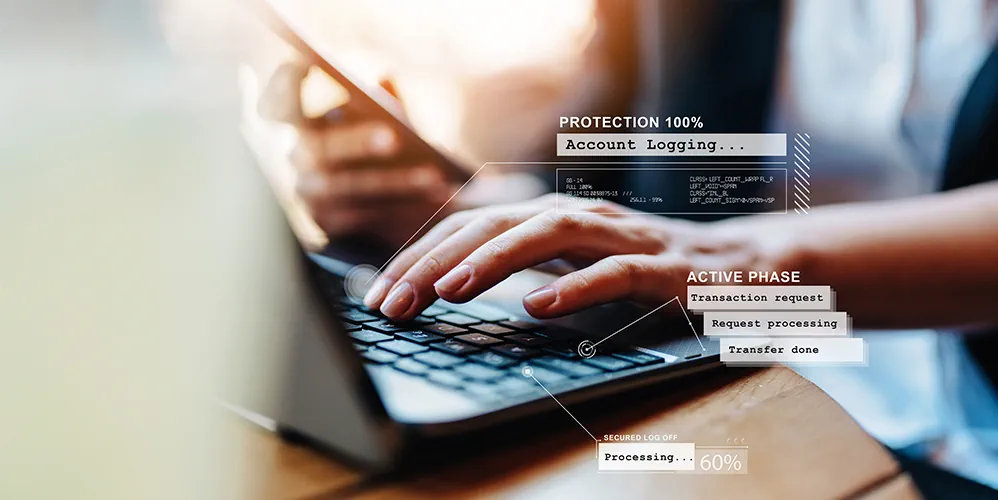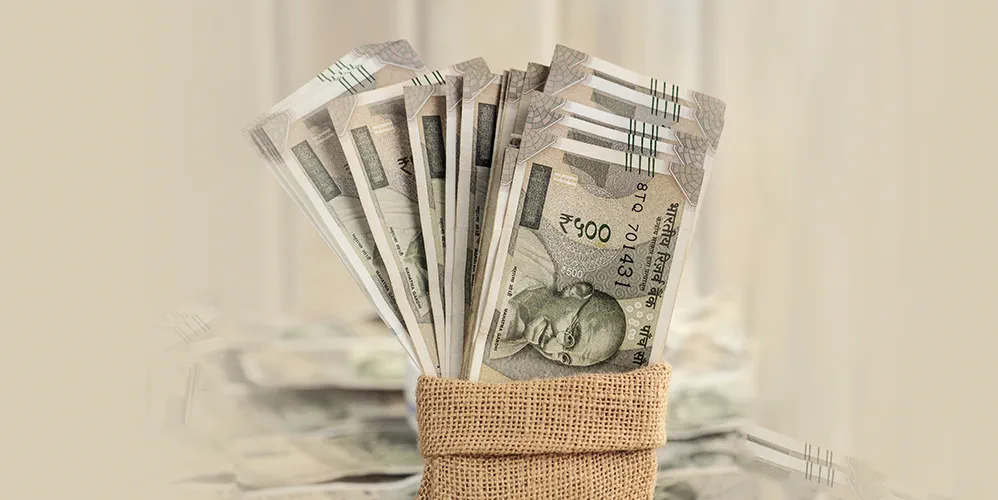
Understanding Cheques: Types, Features, Filling, Cancellation & Requests
26 Apr 2023
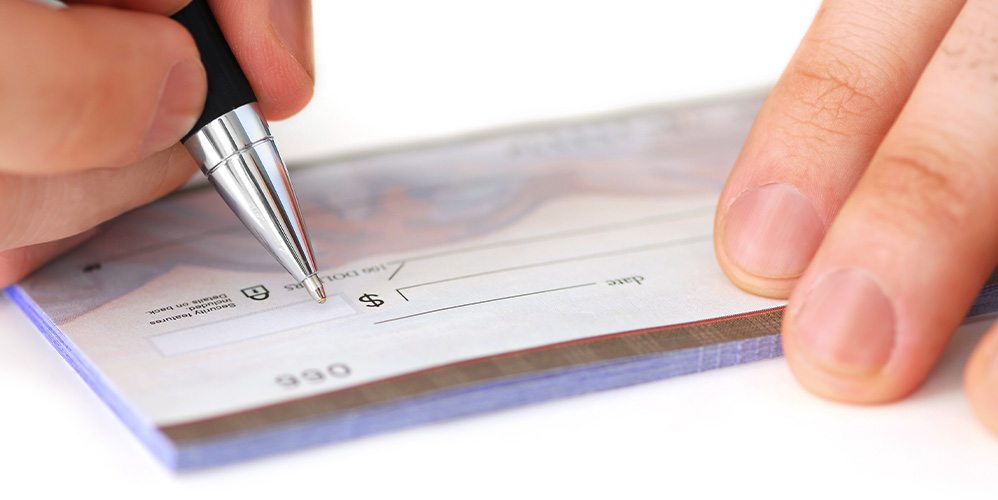
Table of Content
-
What is Cheque?
-
Meaning of Cheque
-
How Does One Fill a Cheque?
-
Number of Parties Involved with a Cheque
-
Features of Cheque
-
Types of Cheques
-
How to Cancel a Cheque?
-
What is a Cheque Leaf?
-
How to Apply for a New Cheque Book?
-
Things to Keep in Mind While Writing a Bank Cheque
-
What is the Difference between Depositing and Cashing a Cheque?
-
FAQs
What is Cheque?
A widely used mode of cashless payment is the cheque. Even in the age of digital banking , it continues to be significant in the banking industry. It is used in both small and large transactions. It can be used in various transaction types, from paying an employee to clearing utility bills. This mode of payment is preferred by many as it involves the convenient and secure transfer of funds. One can read further to know more about cheques, starting from a cheque definition to the different types of cheques.
Meaning of Cheque
A written instruction to a bank or financial institution to pay a given amount from the cheque holder's account to the bearer is known as a cheque. The individual who instructs their bank to transfer funds and writes the cheque is referred to as the drawer. The recipient of the amount is called the payee. The drawer's bank will pay/transfer the specified amount of the cheque when it is cashed or deposited by the payee.
It is the IFSC (Indian Financial System Code) code, MICR (Magnetic Ink Character Recognition), and the cheque number that makes each cheque unique. The 9 digits MICR number on the cheque's bottom facilitates the cheque clearance process. The 11 alpha-numeric IFSC code identifies the bank branch registered under the RBI (Reserve Bank of India) and is involved in transferring the funds.
How Does One Fill a Cheque?
A cheque is an order that instructs a bank to pay/transfer a given sum of money to the beneficiary/bearer. The cheque meaning holds only when it is dated, signed, and filled with proper details. Hence, it contains:
- Writing of the Cheque - This includes filling up the amount, the cheque issuing the individual's signature and the payee's name.
A cheque can be bounced or rejected if the details mentioned are incorrect. To know how to fill cheque, follow the below-mentioned steps:
- One must fill in the date in the 'DD/MM/YYYY' format.
- Fill in the payee's name correctly without leaving any space in the column or making mistakes.
- In the space provided beside "Rupees", fill the amount in words. Include "ONLY /-" at the end of the amount to prevent tampering.
- On the right side, mention the same amount in numerical within the box. Start writing just after Rupee symbol and leave no space for any alteration.
- Use the similar signature used in other formalities of the bank to avoid any invalidation or cancellation of the cheque.
Number of Parties Involved with a Cheque
The different parties to cheque are as follows:
- Drawer - The individual signing and ordering the bank to transfer funds.
- Payee - The beneficiary to whom the cheque is addressed and the amount mentioned needs to be paid.
- Drawee - The bank or financial institution against which the cheque is drawn.
- Endorser - When the original payee transfers their right to payment to another individual, the original payee is called the endorser.
- Endorsee - The individual to whom the right has been transferred is then referred to as the endorsee.
Features of Cheque
The following are the key features of a cheque:
- Cheque number: Cheque number is six-digit number that is present in the bottom left corner of the cheque to guarantee each cheque’s individuality.
- MICR Code: MICR is Magnetic Ink Character Recognition, which is a 9-digit number assigned to cheques. The code has three parts: the first three numbers are city code; second three numbers are bank code and last three numbers are branch code.
- A cheque is not a request sent to the bank but an unconditional order. This means the bill's face value must be fulfilled without any condition.
- Any oral order for the promise of fund payment is not the same as cheque recognition.
- Any account holder holding a Savings/Current/Cash Credit/Overdraft account can issue a cheque.
- A cheque can't be changed once the payee's name is written.
- A cheque can't be changed once the amount has been written.
- The payable amount mentioned in the cheque must be within the sum of money in the drawer's account.
- The transaction is either an account transfer or in cash.
- The amount mentioned in a cheque is payable to the payee, the bearer, or the order.
- A cheque is receivable on demand.
- Any unsigned cheque will be considered invalid.
- A cheque needs to be signed and dated to hold its validity.
Types of Cheques
Order Cheques
- Only the payee mentioned can deposit or cash the cheque in order cheques.
- Unlike other cheques with a “bearer” penned on them that allow anyone to cash/deposit the cheque, order cheques do not have it.
- Identity proof is required for the payee to encash the cheque so that the financial institution can authenticate that they are the cheque's original bearer.
- This not only acts as an extra layer of security that prevents fraud.
Bearer Cheques
- The cheques that can be deposited or cashed by anyone presenting them to the bank are known as bearer cheques.
- In this type of cheque, the person encashing the cheque need not undergo identity verification.
- They are negotiable and can be transferred by sending them by mail or handing them over to another person.
- Since they are negotiable, bearer cheques are considered to be insecure and a relatively risky payment form.
- Owing to this, they are not common and have been replaced largely with other modes of payment like personal cheques or electronic transfers.
Blank Cheques
- If a cheque has been signed with no written amount or payee's name, it is called a blank cheque.
- The payee can fill in their name and payable amount in the blank space.
- A blank cheque is used only when the drawer trusts the payee to fill it out appropriately.
- Blank cheques can be risky as they can be easily manipulated or misused by others.
- As a result, they are not accepted by all financial institutions or banks.
Open Cheques
- The cheques that can be cashed/deposited at any bank and are payable to the cheque bearer are known as open cheques. They are also referred to as uncrossed cheques.
- This cheque can be transferred to a different payee by the original payee.
- The term "Open" on the cheque must not be crossed off to be considered as an open cheque.
- The drawer must sign the back and the front of the cheque.
- Upon receiving the amount, the payee needs to sign the cheque back as receipt proof.
Crossed Cheques
- Crossed cheques must have parallel lines drawn across the top left corner of the cheque with "account payee" inscribed between the lines. Although crossing a cheque is not mandatory, it is for the payee's protection.
- The parallel lines ensure that the deposit is made only to the payee mentioned in the cheque.
- Hence, crossed cheques are the safest form of payment.
- To deposit this type of cheque, the payee must directly deposit it into their bank account by visiting their bank. Only a few banks allow a crossed cheque deposit via mobile banking applications or an ATM.
- They are also called payee cheques.
Stale Cheques
- The cheque's validity starts from the day it has been dated. The validity period varies according to different jurisdictions.
- Generally, after three months, a cheque that has been dated is referred to as a stale cheque.
- Once the validity period is crossed and becomes a stale cheque, it can no longer be encashed.
- In certain cases, the drawer can update the date of the stale cheque to renew it for payment.
- However, it is not always applicable, and the payee might need to write a new cheque.
Post-dated Cheques
- Cheques bearing a future date are known as post-dated cheques.
- Until the specified date has been reached, the payee will not be able to transfer the cheque amount. If the payee tries encashing the cheque before the mentioned date, it might be declined by the bank and considered a stale cheque.
- The cheque is valid only for three months starting from the date mentioned by the drawer.
- These types of cheques are used by the drawer so that they can minimize the cheque bouncing risk because of insufficient funds.
- However, the drawer must first confirm with their bank whether funds can be encashed on the chosen date before mentioning it in the cheque.
Banker's Cheques
- When a bank issues a cheque on its customer's behalf, they are called a banker's cheque.
- The bank can be instructed to pay a given sum to a payee inside the city. The bank may incur certain charges for issuing it.
- To acquire a banker's cheque, the customer needs to pay the required funds upfront and have an account with the bank.
- These cheques are pre-printed and non-negotiable. Hence, it can't be passed on to another payee.
- Although valid for three months since the mentioned date, a banker's cheque can be validated again only under specific legal conditions.
Self Cheques
- When a cheque is not issued by an organisation or business but by an individual, it is referred to as self cheque.
- Typically, they are issued by individuals who want to withdraw funds from their accounts. They must be handled with care so they are not stolen or lost.
- If they are misplaced, anyone else can attempt unsanctioned fund withdrawals mentioned in the cheque.
- Hence, self-cheques need close monitoring to prevent any fraudulent activity.
Traveller's Cheques
- The bank issues these types of cheques. They can be used while travelling to withdraw funds or make purchases.
- They come with pre-printed amounts that can be used to buy services and goods around the globe.
- They are secure funds to carry around, especially while travelling. This is because they can be replaced if stolen or lost.
- The purchaser must sign the traveller's cheque when issued and used for payment.
- However, they are not accepted at all places and may incur minor fees.
How to Cancel a Cheque?
One can strike two parallel lines across a cheque and write the term "CANCELLED" to know how to cancel a cheque. There is no need to sign a cancelled cheque. Since all your primary bank account details are present in a cheque (such as MICR code, branch address and name, name of the account holder, and account number), it aids the auditor to verify these details. To know what is cancelled cheque is, all one needs to do is verify whether the cheque has "CANCELLED" written across it along with two parallel lines.
What is a Cheque Leaf?
A cheque leaf is an instrument utilized to transfer funds from one account to another. It is also known as a cheque. When a bank issues a chequebook, one receives it with a wad of cheque leaves.
One can conduct secure and safe financial transactions using a cheque as a payment mode. A cheque eliminates the risk of a physical transfer by enabling one to send a large sum of funds from one bank account to another. One must use either blue or black ink to enforce a cancelled cheque leaf.
How to Apply for a New Cheque Book?
To request a new chequebook, one can use one of the few ways mentioned below:
- Mobile Application - One can request a new chequebook by logging in to the bank's mobile application.
- Branch Visit - One can visit their nearest bank branch and request a new chequebook.
- Internet Banking - By logging in to the online banking account of the bank, one can request a new chequebook. This would require mentioning information like mailing address and account number. Then, the new chequebook will be sent to the residential address linked with the bank account.
- Through Contact Centre- One can request cheque book using Bank’s Contact Centre services at number 1800 5700.
- Cheque Book Request Letter - One can also write a chequebook request letter to their bank using the following format:
- Address of the individual requesting the new chequebook
- Date
- Address of the bank
- Salutation
- Subject
- Body
- Signature
- ATM - Finally, one can request a new chequebook via an ATM using the following steps:
- First, they would need to visit the bank's ATM.
- Insert their debit card.
- Enter their PIN and select the option 'Issue New Chequebook'.
- Press 'Submit'.
- Once the request has been successfully submitted, a new chequebook will be sent to their residential address.
Things to Keep in Mind While Writing a Bank Cheque
Since every bank has different guidelines for filling a cheque, one must follow up. Before writing a bank cheque, these are some of the basic aspects that one must keep in their mind:
- One mustn't overwrite the cheque leaves.
- Unnecessary spaces between words and numbers must be avoided while filling the cheque leaf.
- None of the columns must be left blank.
- One must ensure that a cheque is not stapled or folded.
- There must be consistency and clarity in the drawer's signature.
- To avoid tampering, one must write "ONLY /-" beside the payable amount.
- If the cheque is being used to pay any utility bill, one must mention their details (such as connection number, mobile number, credit card number, etc.) on the back of the cheque.
What is the Difference between Depositing and Cashing a Cheque?
| Cash Cheque | Depositing Cheque |
|---|---|
| One will be given the amount mentioned in cash by encashing the cheque. The full amount can be encashed and spent as one likes it with zero restrictions. | A cheque deposit adds the mentioned amount to their credit union or bank account. In this process, one needs to wait at least two days before the complete amount is ready for withdrawal/spending. |
FAQs on Cheque
1. What is a cheque number?
The unique 6-digit number printed on every cheque leaf is known as the cheque number.
2. Is it possible to use a cancelled cheque several times?
Yes, it is possible to use a cancelled cheque several times.
3. When will banks refuse to make the cheque payment?
Under the below-given circumstances, a bank can deny cheque payments:
- A cheque without a date mentioned.
- If more than three months have passed since the cheque has been dated.
- When a post-dated cheque is submitted before the mentioned date.
- When the account of the drawer is closed.
- Drawer's insanity or death.
- When there is suspicion of fraudulent activity.
- Reaching the overdraft limit.
- The drawer has insufficient funds in their account.
4. How long does it take for a cheque to clear?
Local Cheques:
- All CTS compliant cheques and other Negotiable Instruments payable under the grid system would be presented through the clearing system prevailing at the centre.
- Non-CTS Cheques will be presented in the clearing house at the prescribed intervals which is presently once a week on each Monday or as decided by RBI from time to time.
Outstation cheques:
- Cheques payable at CTS Centre: Maximum period of 7 days,
- Non CTS Centres: Maximum period of 10 days.
5. How long are cheques valid for?
Generally, a cheque's validity is up to three months starting from the date mentioned. After that, the cheque can neither be deposited nor cashed.
6. What is a positive pay system?
The positive payment system was launched to minimize tampering fraud and improve customer safety while making payments via cheques. In this process, any cheque exceeding Rs. 50,000 involves reconfirming the details. Only if there is consistency in the details the cheque is honoured. If not, the difference in a mismatch is immediately flagged.
7. How to fill cheque deposit slip?
To know how to deposit cheque in bank, one would need to fill up a cheque deposit slip. Follow the below-mentioned steps to know how to fill cheque deposit slip:
- Visit the concerned bank's branch
- Collect the Pay in Slip
- Fill it up with the right information, such as the account number and drawer's name.
- Attach the Pay in Slip with the cheque without deforming or stapling the cheque leaf.
- Ensure all the details mentioned in the cheque are in proper order
- One will find a Drop Box attached either on the walls/stands where they can deposit the filled Pay in Slip and cheque leaf
Popular Articles
Tag Clouds
-
Disclaimer
The contents of this article/infographic/picture/video are meant solely for information purposes and do not necessarily reflect the views of Bank of Baroda. The contents are generic in nature and for informational purposes only. It is not a substitute for specific advice in your own circumstances. Bank of Baroda and/ or its Affiliates and its subsidiaries make no representation as to the accuracy; completeness or reliability of any information contained herein or otherwise provided and hereby disclaim any liability with regard to the same. The information is subject to updation, completion, revision, verification and amendment and the same may change materially. The information is not intended for distribution or use by any person in any jurisdiction where such distribution or use would be contrary to law or regulation or would subject Bank of Baroda or its affiliates to any licensing or registration requirements. Bank of Baroda shall not be responsible for any direct/indirect loss or liability incurred by the reader for taking any financial decisions based on the contents and information mentioned. Please consult your financial advisor before making any financial decision.

